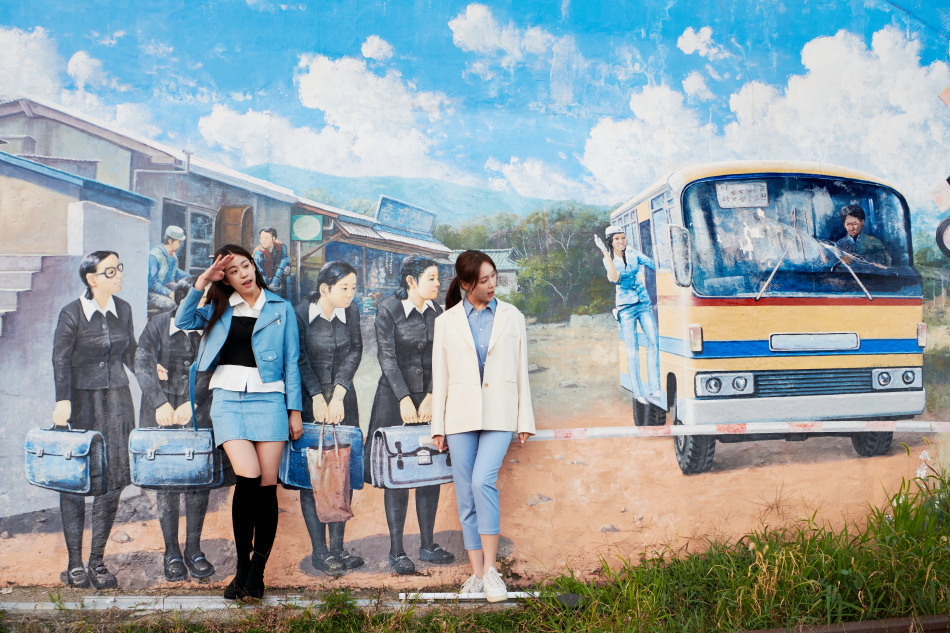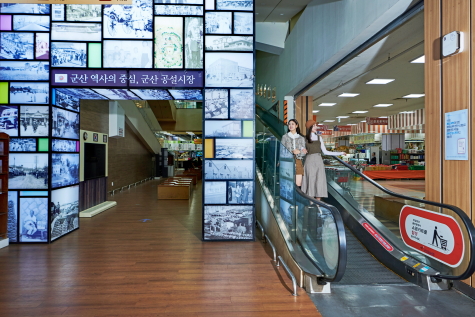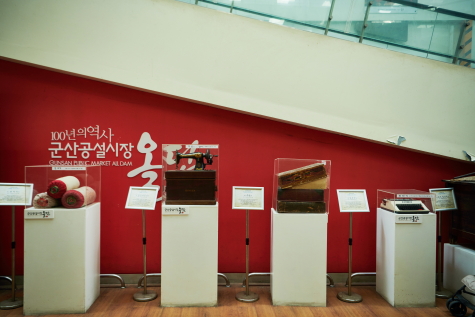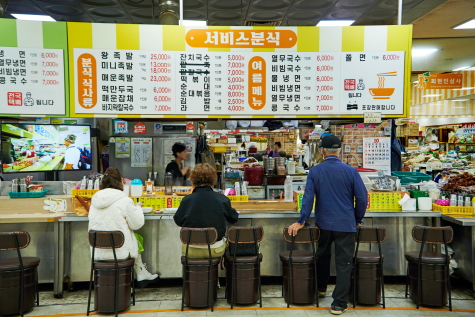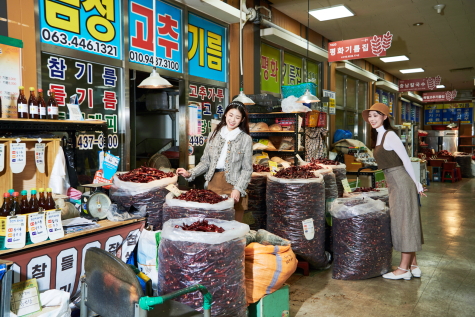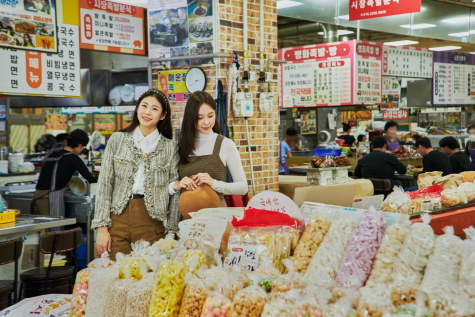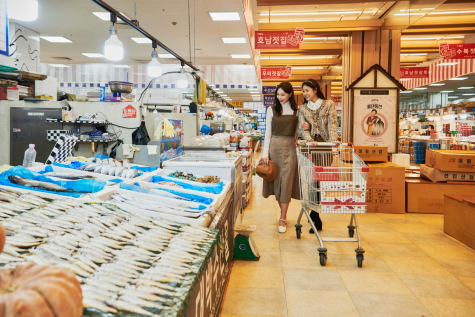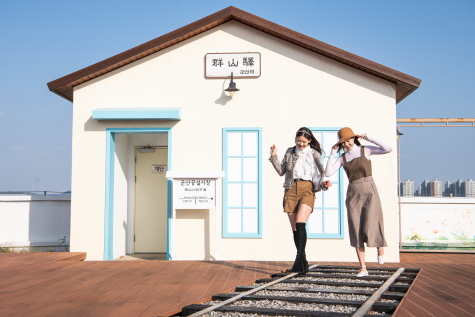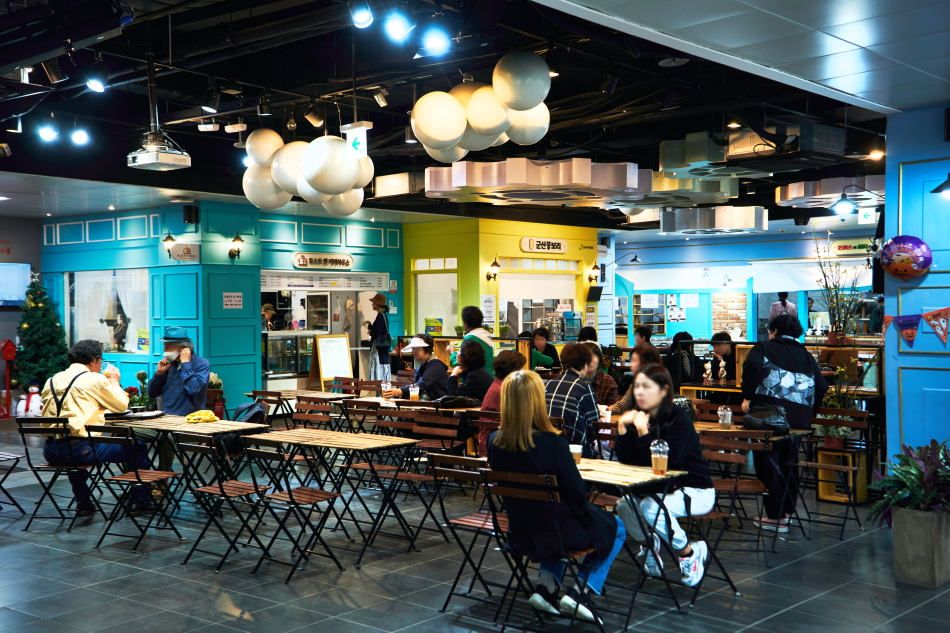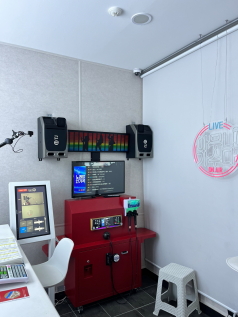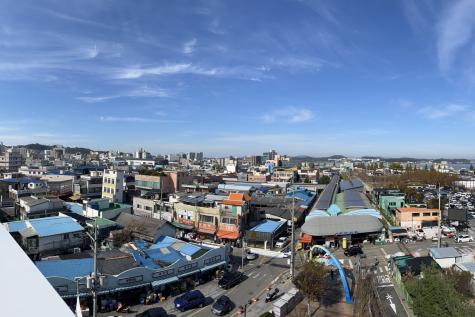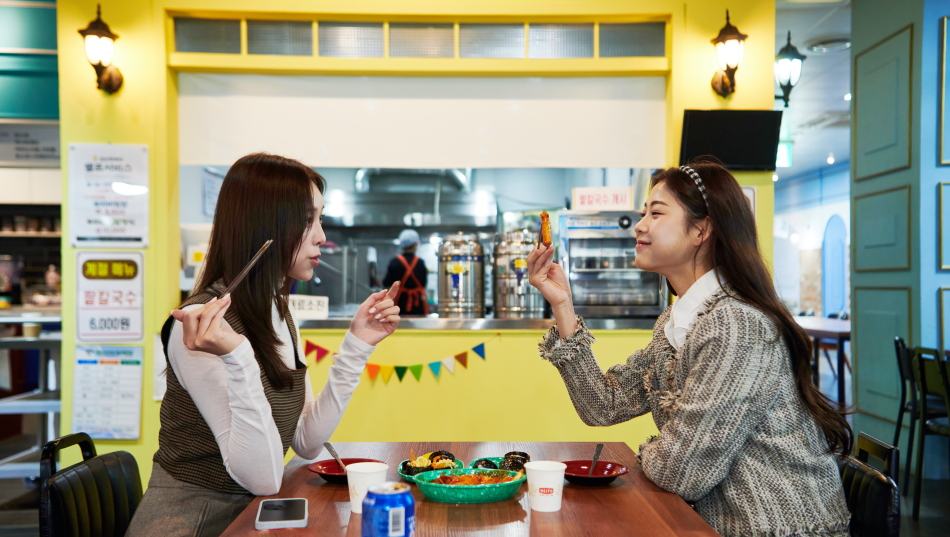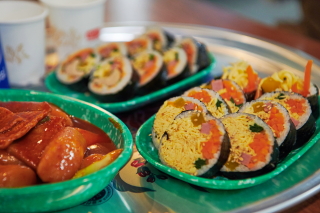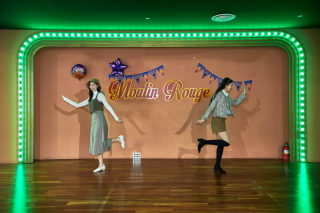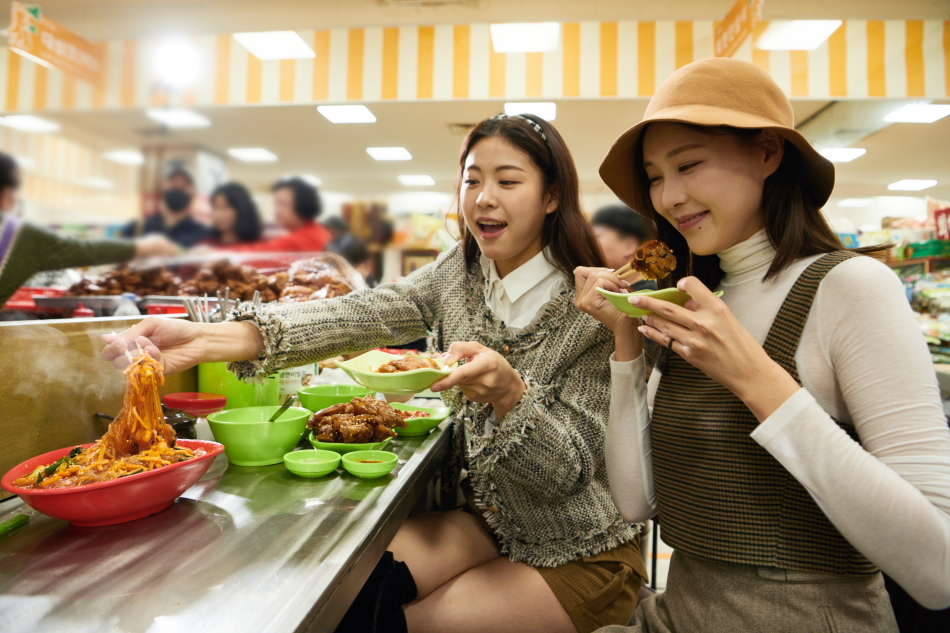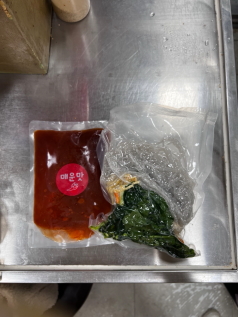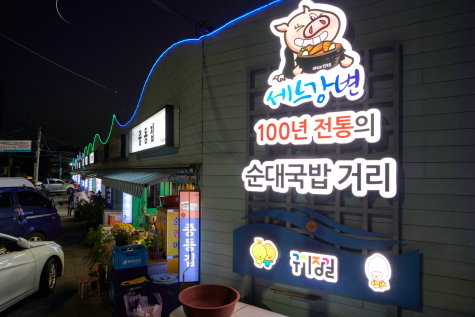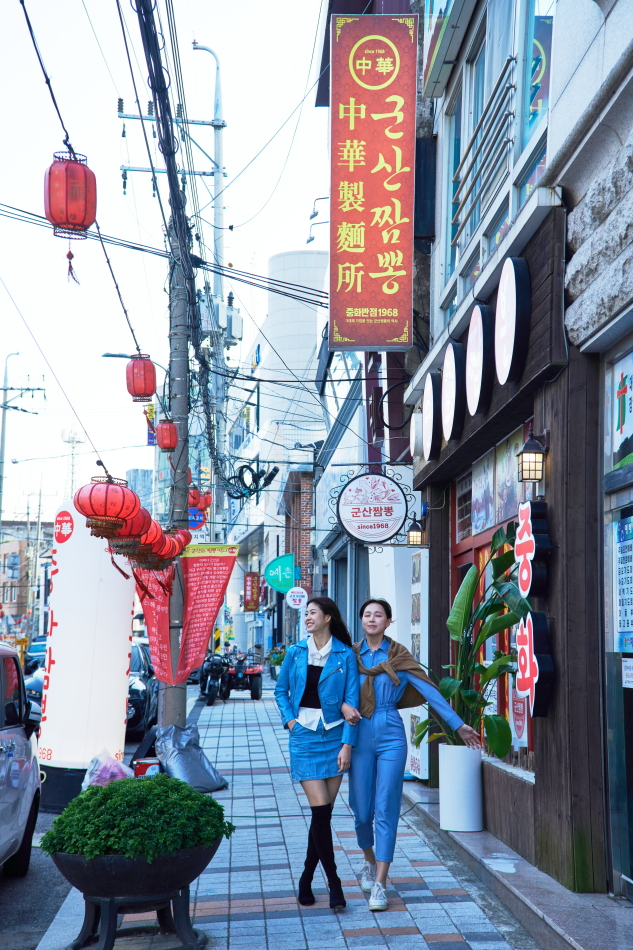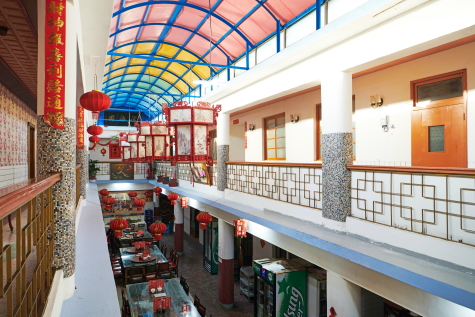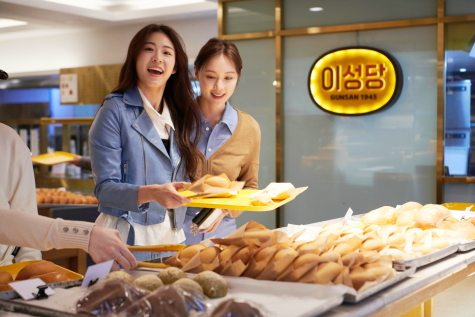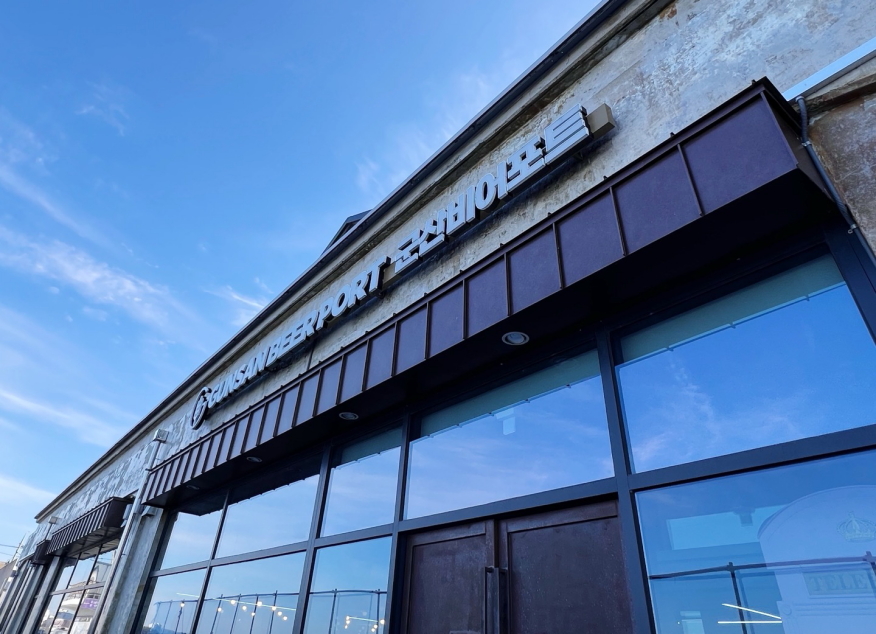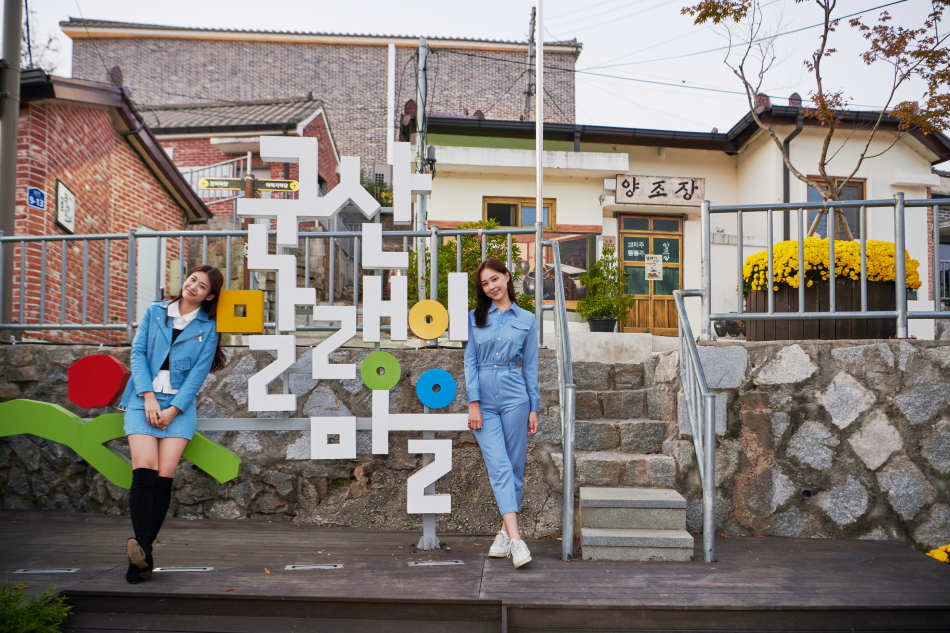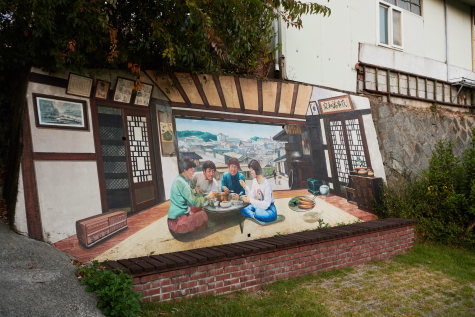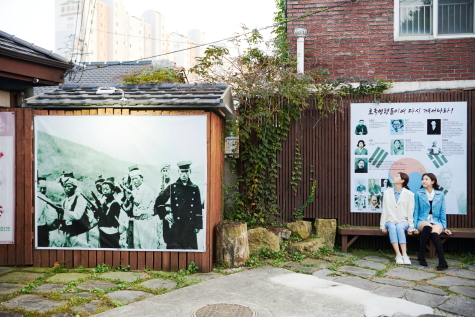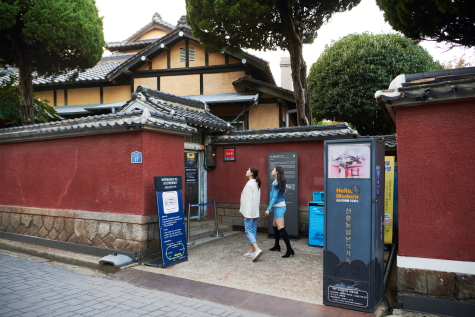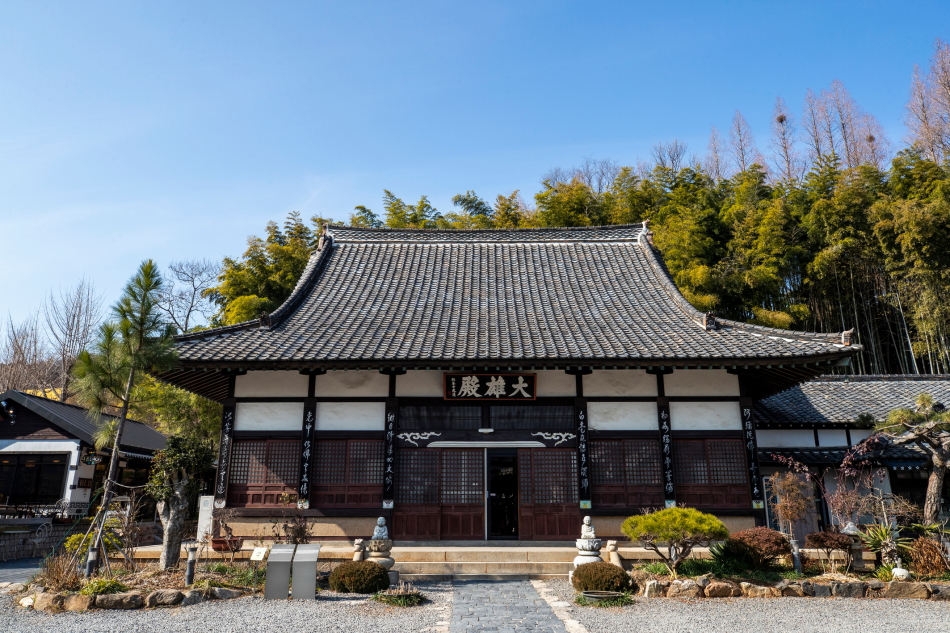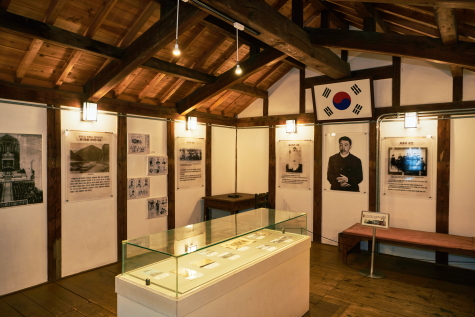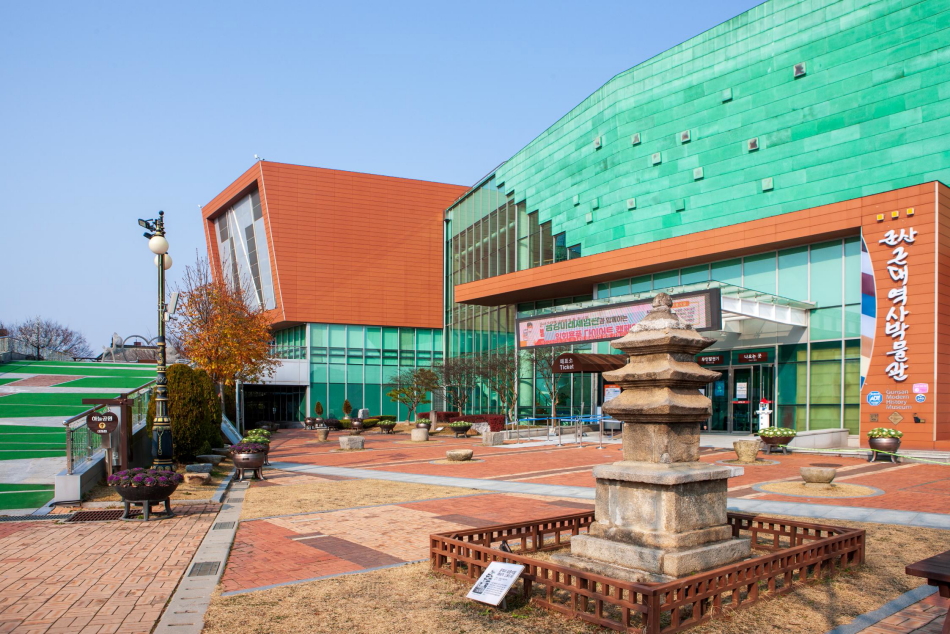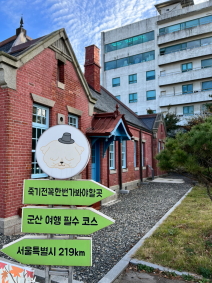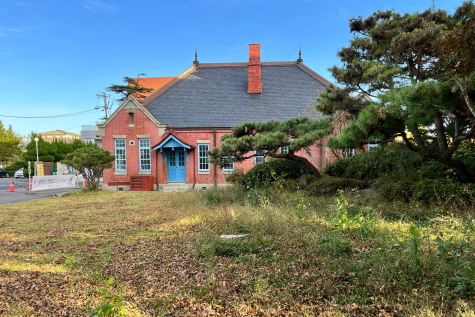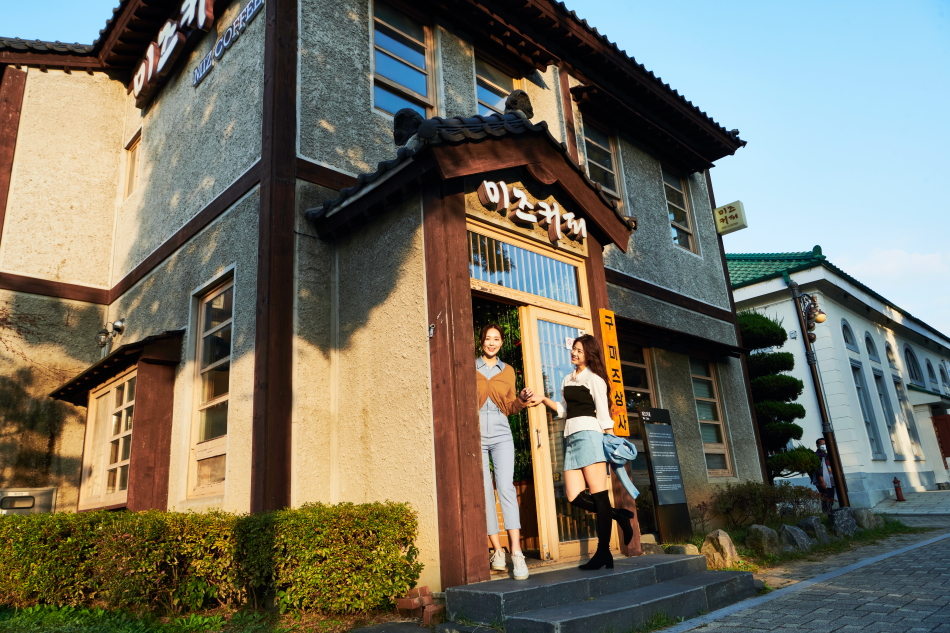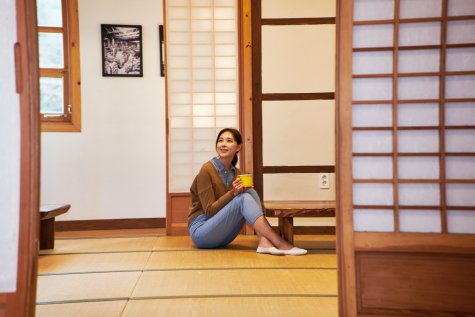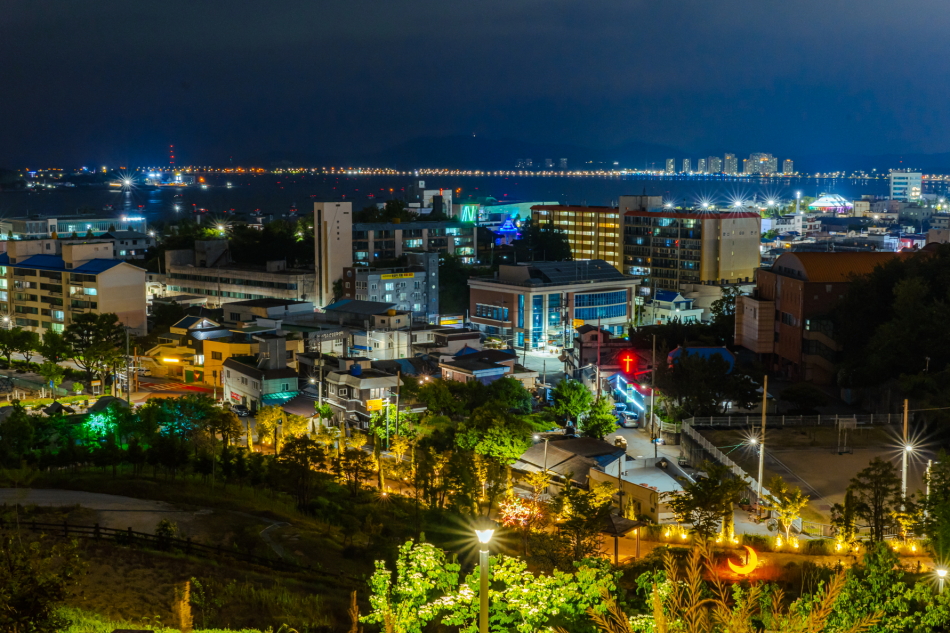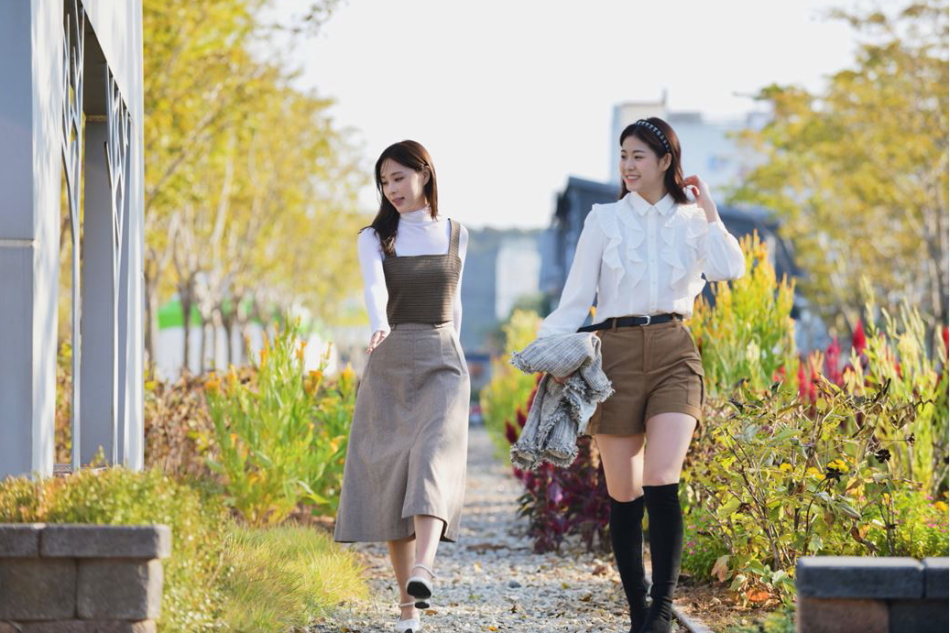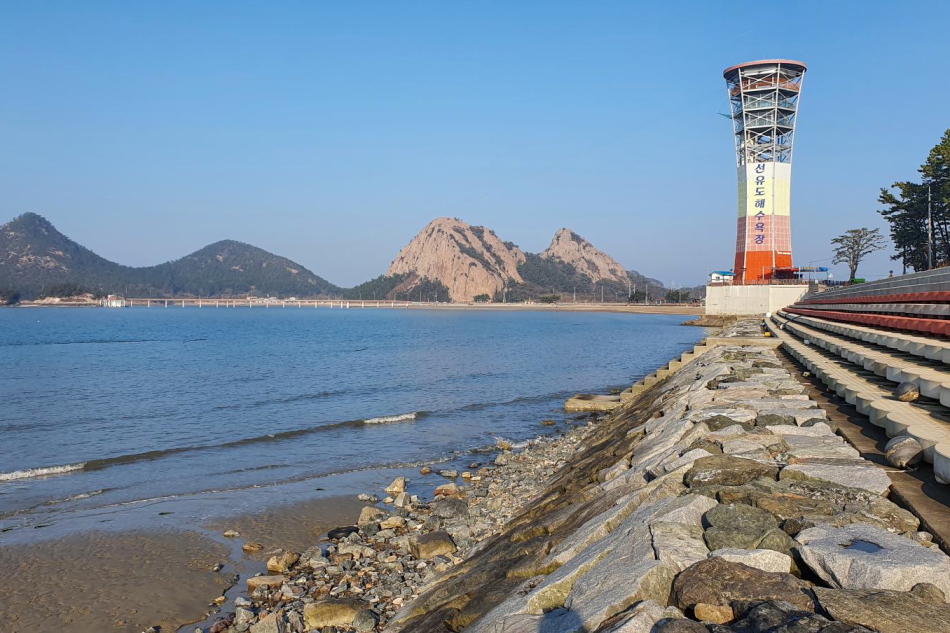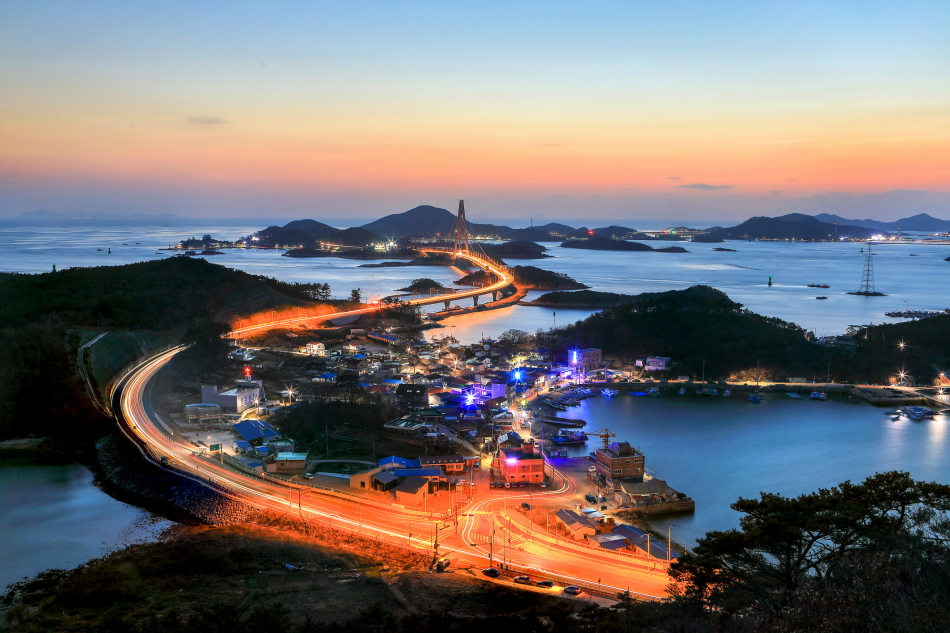- Log in
-
- Sydney Overseas Office
- London Overseas Office
- Paris Overseas Office
- Toronto Overseas Office
- Los Angeles Overseas Office
- New York Overseas Office
- Ulaanbaatar Overseas Office
- Istanbul Overseas Office
- Dubai Overseas Office
- New Delhi Overseas Office
- Manila Overseas Office
- Jakarta Overseas Office
- Hanoi Overseas Office
- Kuala Lumpur Overseas Office
- Singapore Overseas Office
- Bangkok Overseas Office
- Map
- Sydney Overseas Office
- London Overseas Office
- Paris Overseas Office
- Toronto Overseas Office
- Los Angeles Overseas Office
- New York Overseas Office
- Ulaanbaatar Overseas Office
- Istanbul Overseas Office
- Dubai Overseas Office
- New Delhi Overseas Office
- Manila Overseas Office
- Jakarta Overseas Office
- Hanoi Overseas Office
- Kuala Lumpur Overseas Office
- Singapore Overseas Office
- Bangkok Overseas Office
Traditional Markets
-
-
-
【Jeonbuk】Gunsan Public Market
-
12/14/2023
-
564
0
0
-
-
Gunsan
-
-
Enjoy your Gunsan while walking through its history, starting from Gunsan Public Market.
When you walk around Gunsan, you will see a unique beauty and friendliness created by the combination of live modern history to be found all around the city and the people who are harmoniously living with the past and the present. The perfect and harmonious marriage of local history and local people, that is the real attraction of Gunsan!
ENJOY GUNSAN
【Korea’s first modern traditional market which is shaped as a ‘huge ship.’】
After the Opening of Gunsan Port in 1899, Gunsan became the main location for gathering the rice from Jeollabuk-do area which was then exported to Japan. After the Opening of Gunsan Port, there was an almost continuous succession of trains starting from Jeonju to Gunsan via Iksan, carrying various materials. The materials will then be transported from Gunsan Station to Gunsan Port. The increase of the traffic of materials naturally brought the formation of a market, which later became Gunsan Public Market. The market was demolished during the Korean War, but some makeshift shops started pop up after the end of the Korean War. These various makeshift shops in the area became the basis of an open market in 1970s. Backed by the government’s support program, Gunsan Public Market transformed itself to be the Korea’s first modern traditional market in 2012, a shopping mall-type of market with 4-story building that houses 276 shops. The 1st and the 2nd floors of the building are packed with different shops and the 3rd and the 4th floors are parking lots which provide an ample space for visitors parking. The Market also has a rooftop park, a photo spot with replication models of a red windmill and an old train. The Market is equipped with moving walkways and elevators for customers’ convenient shopping experience.
Once you come into the Market, you will see the shopkeepers’ welcoming smile, neatly arranged fruits and vegetables, meat products and seafood. In the Market, customers will meet blacksmith’s shops, mills, traditional herbal medicine shops, salted seafood shops, and vegetable oil shops which are typical shops to be found in old traditional Korean markets, and thus can enjoy the feeling of traditional atmosphere. Even when the shops in the Market are neatly arranged in the latest contemporary fashion, you can still feel the warmth of the old traditional market. When you visit Gunsan Public Market, you will probably find Homi (Korean hand plow), a global star of Korean gardening essential, and an appetizing Korean perilla oil bottle in your shopping bag when you leave the Market.
Youth Mall Moulin Rouge located at the 2nd floof of Gunsan Public Market is a place for young people. Cafés with trendy foods and various desserts, handmade art shops where visitors can experience making their own needlework or handmade soaps, and other interesting shops and places are abundant in Moulin Rouge. There also are places for visitors with small children, such as nursing room and kids’ café. Another interesting place in the area is YouTube Zone, which is open to all the wannabe creators, is very popular with teenagers and young adults. There also is a Coin Karaoke, another place people can enjoy their time.

When you walk out of Gunsan Public Market, you will meet Gunsan Station Plaza, where morning market happens early in the morning. After the Gunsan Station Market, you will meet Sinyeong Market which is located near the road with street trees that will lead to the sea. Your time in Gunsan will fly away when you visit various buildings with modern architecture and taste delicious food. In Sinheung-dong area, you will find sushi bars and whiskey bars with yellow lightings. A full day is not enough time to enjoy all of Gunsan at all!
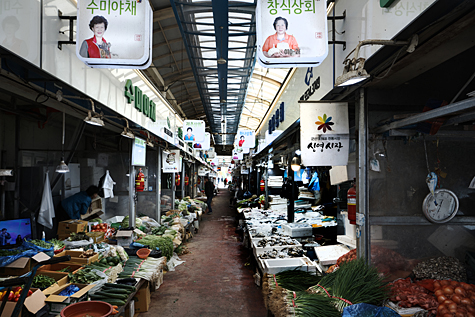
©Gunsan-si
Address: 18 Shingeum-gil, Gunsan-si, Jeollabuk-do
Phone Number: +82-63-445-4929
Operating Hours: 9:00 am ~ 9:30 pm (Hours vary depending on the individual shops)
Holidays: Every First & Third Sundays of Every MonthEAT GUNSAN
【Friedly and Delicious: The 3 Best Eateries of Gunsan Public Market.】
Youth Mall Moulin Rouge
Youth Mall Moulin Rouge is full of young energy and you can find delicious foods that you can feel the value for money. At the Youth Mall, you can try Sijang Gimbap’s egg roll Gimbap (rice rolled with dry seaweed), Jebi Jebi Hand Sujebi’s perilla seed sujebi (hand-pulled dough soup made from flour batter) and Tteokbokki, Gunsan Ggongboribap’s red bean soup noodle and all barley dish, and Youth Taste’s Chinese food. You can also try trendy food items, such as Donkatsu & Pizza’s super-size pork cutlet, Kairang’s rice noodle soup. Youth Mall Moulin Rouge is almost always crowded even during the weekdays with customers who came to try something interesting after their shopping is done.
* ‘Moulin Rouge’ means a red windmill, and the naming was done with the hope of continuously growth of young shop keepers’ businesses as the windmill sails that never stop turning and keep on grinding grains.
Operating Hours: 10:00 am ~ 5:00 pm (varies depending on the individual shops)
Holidays: Every Sunday (varies depending on the individual shops)Spicy Japchae (stir fried noodles with vegetables and meat)
Spicy Japchae is one of the signature snack foods of Gunsan Public Market and you can enjoy it in any snack shop in the Market. Spicy Japchae is made of mixing and boiling in a pan with sweet potato starch noodles, fish sticks, various vegetables such as spinach and carrot together with spicy sauce. You will wonder how this simple food can be so delicious. Spicy Japchae meal kits are also available for your home cooked snack. Making the Spicy Japchae is quite simple; wait until the broth boils first and then put all the ingredients together at once and boil for another 3 minutes. You can add seafood or meat if you want, and adding a little bit of sesame oil at the end of the boiling process will enhance the tasted of the Spicy Japchae.
Operating Hours: 07:00 am ~ 08:00 pm (varies depending on the individual shops)
Holidays: Every Sunday (varies depending on the individual shops)Sundae Gukbap (Korean pork sausage and rice in pork bone broth) Street
Along the winding alley which starts from the West Gate of the Gunsan Public Market, there is Sundae Gukbap Steet. The Sundae Gukbap Steet boasts 100 years old history and all the shops gone through some renovations to make sure customers’ comfortable eating experience. A co-op, which was formed some 20 years ago bring cooked pork to the shops in the area. By adding their own cooking style, some 12 different Gukbap restaurants serve customers with their signature Sundae Gukbap.
>
Operating Hours: 07:00 am ~ 00:00 pm (varies depending on the individual shops)
Holidays: Every Sunday (varies depending on the individual shops)EAT GUNSAN
【Tradition vs. Trendy: The 3 Most Popular Restaurants of Gunsan.】
Binhaewon
In Gunsan, number of Chinese restaurants suddenly increased when ‘Foreginers Land Acquisition Act’ of 1961 severely limited Chinese Koreans’ land ownership. The marriage of Chinese Shandong food Chow Mein and Gunsan’s abundant seafood made Gunsan’s own Jjamppong (Spicy noodle soup). Gunsan Jjamppong Steet is very famous, but Gunsan has other famous Chineses restaurants such as Bogseonglu and Jilinseong. In Binhaewon, you can enjoy the delicious soup, chewy noodle, and lots of seafood at the same time. You can also look around the Binhaewon building itself, which is a Registered Cultural Heritage, and learn something about Gunsan’s history.
Address: 57 Dongnyeong-gil, Gunsan-si, Jeollabuk-do
Operating Hours: 10:30 am ~ 9:00 pm
Holidays: Every MondayLeesungdang Bakery
Together with Sungsimdang Bakery in Daejon and Mammoth Bakery in Andong, Leesungdang Bakery in Gunsan is regarded as one of the three most popular bakeries in Korea. It is not exactly an exaggeration that people can tell whether you are a Gunsan local or a tourist just by looking at how big your Leesungdang Bakery shopping bag is. As one of the must-visit places of Gunsan, Leesungdang Bakery’s red bean bun and vegetable bun are amazingly popular. However, peanut butter bun and other products are also quite nice, so we recommend you to try lots of different kinds at Leesungdang Bakery. At its new annex building, you can buy nicely packaged gift sets, also.
Address: 177 Jungang-ro, Gunsan-si, Jeollabuk-do
Operating Hours: 8:00 am ~ 9:30 pm (wintertime), 10:00 pm (summertime & Fridays, Saturdays)
Holidays: 1~2 times a month (irregular closing)Gunsan Beer Port
Gunsan Beer Port is the only beer brewery that uses locally harvested malt. It is a special complex cultural space where customers can taste beers made by 4 different local breweries. In a spacious and comfortable space, you can choose your choice of beer and side dishes. If you don’t have any specific preferences, the best way to find out your taste of beer is to order the sampler set. When you walk up the 2nd floor, you can have the unobstructed view of Gunsan sea, which gives you an opportunity to think about your life for a while. You can take a picture of yourself with the West Sea as you background.
Address: 146-24 Haemang-ro, Gunsan-si, Jeollabuk-do
Operating Hours: 12:00 Noon ~ 12:00 Midnight
Holidays: G3 · Mainkun _ Every Monday / Dramatic · Craft Wolmyeong _ Every TuesdayTRIP GUNSAN
【Time traveling to old Gunsan】
Malaengi Village
This residential was originally established around Japanese houses in Sinheung-dong. After the Korean War, the area became places for the war refugees. The houses were built on top of patched wooden panels right on the boulders. The name Malaengi Village comes from Jeolla dialect “Malaengi,” which means mountainside. When you visit the area, you will find various interesting places, such as movie theater, old well, Memories Exhibition Hall, Story Plaza, Sinheung Brewery hidden in hilly alleys. If you are lucky, you can participate in Malaengi Village Festival which is held in only one Saturday each month, and enjoy Malaengi Village Stamp Tour while tasting free Pajeon, Korean Green Onion Pancake.
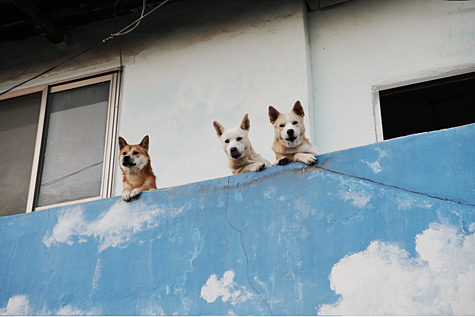
©Gunsan-si
Address: 34-5 Sinheung-dong, Gunsan-si, Jeollabuk-do
Sinheung-dong Japanese House
©Korea Tourism OrganizationDuring the Japanese colonial occupation period, the Sinheung-dong area was populated with well-to-do people of Gunsan. When you visit the old Japanese house built during the Japanese colonial occupation period and see the size of the well-appointed garden, you can guess how much wealth the people who lived in the house back then had accumulated. Inside the Japanese house, you will see Gudeuljang (Korean floor heating stone) and heating boiler were installed to fight cold Korean winter. At the end of the outdoor pool of the Japanese House, there is back gate which leads to Malaengi Village.
Address: 17 Guyeong 1-gil, Gunsan-si, Jeollabuk-do
Dongguk-sa Temple
©Korea Tourism OrganizationDongguk-sa Temple does not have Dancheong (pattern of many colors) which is typical of Korean traditional temples. The temple’s eaves have no decorations, and the outer wall of Daeungjeon Hall (main hall) is decorated only with lattice windows. It is because Dongguk-sa Temple is the only Japanese-style Buddhist temple survived in Korea. The temple’s Daeungjeon Hall and dormitory building is connected by indoor corridor and gable roof and single eaves architectural style is a typical of Japanese Edo Period, which is characterized by its simplicity. After the end of Japanese colonial occupation period, the temple name became Dongguk-sa, an abbreviation of ‘Haedong Daehanminguk’ (Republic of Korea, a country situated in the East of the Sea).
Address: 16 Dongguksa-gil , Gunsan-si, Jeollabuk-do
Gunsan Modern Art Museum & Gunsan Modern Architecture Hall & Gunsan Modern Art Museum
Located at the right across the street at Naehang intersection to each other, both Gunsan Modern Art Museum and Gunsan Modern Architecture Hall were used as banks during Japanese colonial occupation period. Back then, Gunsan Modern Art Museum was Nagasaki 18 Bank, and Gunsan Modern Architecture Hall was Joseon Bank’s Gunsan branch office. Both banks were Japanese colonial government’s financial institutions, and Japanese used these banks to finance and purchase vast lands from Koreans. Then they used the lands to cultivate, harvest and export rice to Japan and made huge profits in the process. Currently, Gunsan Modern Art Museum is used both as an art exhibition space and Korean history classroom with its replica of Lushun Russo-Japanese Prison where An Jung-geun, Korean independence activist was prisoned before his execution. Gunsan Modern Architecture Hall currently exhibits Gunsan’s modern architectures and money and other relics of Japanese colonial occupation period. If you want to know more about Gunsan’s history, you can visit Gunsan Modern History Museum, which is nearby Gunsan Modern Art Museum.
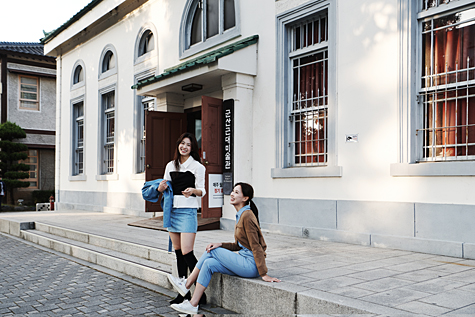
©Korea Tourism Organization
©Korea Tourism Organization
©Korea Tourism OrganizationAddress: 230 / 214 / 240 Haemang-ro, Gunsan-si, Jeollabuk-do
Old Gunsan Customs Museum
This beautiful building which grabs people’s attention with red bricks and blue gate was the main building of Gunsan Customs Office. It was built in 1908, during the period of Empire of Korea. The building is one of the 3 major buildings in Korea which are built following the Classical Architecture style.
Address: 244-7 Haemang-ro, Gunsan-si, Jeollabuk-do
Miz Coffee
Miz Coffee was built as a Japanese trading company Miz Corporation’s corporate building during Japanese colonial occupation period. The building went through lots of changes with the changes of time. It once was used as a bank, and then after the Japanese colonial occupation period, used as a quarantine office, also. The building was originally located at the right in front of Gunsan Modern History Museum but dismantled and restored at the current location. When you visit Miz Coffee building, you can see all the characteristics of Japanese wooden building’s architectural details.

Address: 232 Haemang-ro, Gunsan-si, Jeollabuk-do
Sinheung-dong City Forest Park
©Gunsan-siIf you have a plan to stay at least one night, this park must be included as your evening walking course. As a part of the effort in transforming Gunsan as a healthy green city, Gunsan-si government created Shinheung-dong City Forest Park by restoring a section of Wolmyeong Park. When you follow the warmly lighted walkway, you will encounter a photo zone decorated with flowering tree with galaxy-shaped lights and the bright full moon. Walk little farther from the photo zone, and you will meet the observation post where you can enjoy the fantastic night view of Gunsan, a perfect mix of city lights and the ocean.
©Gunsan-si
©Gunsan-si
Address: 12-7 Geum-dong, Gunsan-si, Jeollabuk-do
Monggitdol-gil · Geumam-dong City Restoration Forest
Monggitdol is a stone that is attached at the stern of small ship that works as a weight to prevent the ship to be washed away during the ebb and flow. The out-of-service railroad track from Sinyeong Market to Jjabo Dock, which once used as a busy transportation route for ships moored in the dock, transformed itself into Monggitdol-gil and Geumam-dong City Restroration Forest. Rows of dawn redwood trees are shooting towards the sky and blue bigleaf hydrangea, white tree peony, and yellow rapeseed flowers bloom in different seasons. It is a perfect place to take great photographs, so come and visit the area and take the instagrammable pictures.
©Gunsan-si
©Gunsan-si
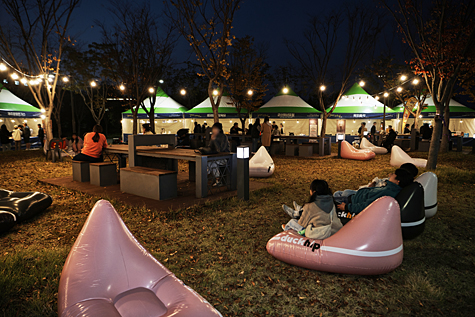
Address: 287 Geumam-dong, Gunsan-si, Jeollabuk-do
Gogunsan Islands
Gogunsan Islands are an archipelago made up of 16 inhabited islands and 47 uninhabited islands, and was selected as one of “100 Must-Visit Tourist Spots” in Korea. The Gogunsan Islands are full of interesting places such as Seonyu Skyline Sun Line, Munyeodo Island Car Camping Ground, Munye2gu Village Bus Café and you can enjoy great ocean view along the beautiful coast line that connects several islands.
©Korea Tourism Organization©Munyeo 2-gu Village Bus
©Munyeo 2-gu Village Bus
All these great places of Gunsan are gather together in a nearby areas to each other, so you can visit them all by foot in a day. However, we highly recommend you stay one more day and visit Gogunsan Islands, which are located about 40 minutes from Gunsan by car. The Gogunsan Islands are worth the visit, and you will not regret spending more time to visit the area.
©Korea Tourism Organization※ All the information contained in this site is based on the information gathered as of December 2023.
Ownership of all the information contained in this site belong to Korea Tourism Organization, and any part of the information shall be not used without expressed written consent of Korea Tourism Organization.

